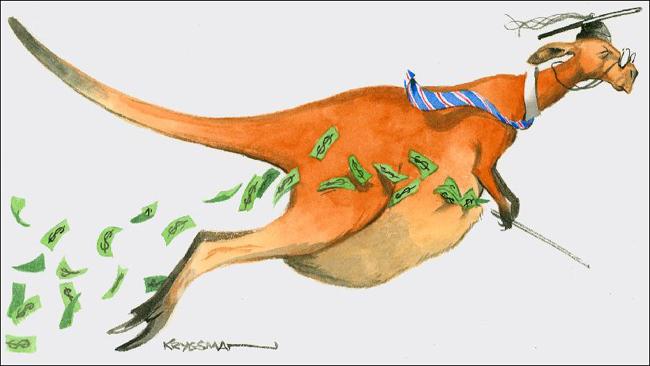Federal funding fails examination

I ATTENDED Kensington primary school in Melbourne between 1958 and 1963. Before 1964, there was no direct commonwealth funding for school education in the states. In 1964, the Menzies government provided grants for science laboratories and equipment in government and non-government secondary schools. It marked the commonwealth's entry into school funding.
I attended Flemington high school between 1964 and 1969. In 1969, the commonwealth extended capital assistance to finance library facilities in government and non-government secondary schools. Seems as though I missed out twice. The big commonwealth money began to flow in the 1970s, with general recurrent per student grants for non-government, especially poor Catholic, schools.
As a post-graduate student, I remember following closely the 1973 Interim Committee for the Australian Schools Commission, chaired by Professor Peter Karmel. The committee, established by the Whitlam government, recommended needs-based funding to ensure that all schools achieved minimum acceptable standards.
As a result, in 1974 commonwealth recurrent funding was extended to government schools and special funding programs were introduced for disadvantaged schools, special education, teacher professional development and innovation. These programs and many others still run. Indeed, David Gonski reported in much the same terms as Peter Karmel.
In the decades since Karmel, why does teaching children require an additional $6 billion per year of commonwealth and state funds, as Gonski recommended?
The commonwealth's spending on schools as a proportion of gross domestic product has been climbing for decades. So, too, has that of the states. The standard of living has been climbing for decades, so Australia's investment in schools has climbed substantially in real terms for decades.
Cost rises in medicine I understand; medical technology and invention drives costs; we are healthier. But education? Is there really that much difference from when I was a student? Apart from better facilities and staying on somewhat longer, generally well-educated and dedicated teachers have staffed Australian schools since at least the 60s. Whose dream is being chased here?
There is one way out of this inflation. How does the commonwealth Department of Education add value to Australian schools? Average staffing levels for the administration of commonwealth schools and allied programs is about 900. All good people, I am sure, but not one, as I understand, actually teaches in school. The states each have considerable education administrations; none of them teach in schools.
The commonwealth became involved in schools because it had the money. Had the states had the taxing powers, it is conceivable that the same teachers' unions and the same parents would have lobbied their governments for the same taxpayer dollars as are now supplied by the commonwealth.
Former Victorian premier Joan Kirner started her political career as president of the Victorian Federation of State Schools Parents Clubs. Joan would always bend a politician's ear on funding state schools; if the states had the commonwealth's taxation powers, Joan would have bent other ears.
The commonwealth provides nearly 10 per cent of schools funding. It is a top up, although a big one. The commonwealth's 15 or so programs - Youth Support, Empowering Local Schools, National Rewards for Great Teachers and more - cost about $9 billion a year. The commonwealth provides the majority of its funding to non-government schools, and state and territory governments provide the majority of their funding to government schools.
Section 96 of the Constitution has been used to legitimise commonwealth intervention and provides that "the parliament may grant financial assistance to any state on such terms and conditions as the parliament thinks fit". The commonwealth can tie the payment of grants to the states to implement commonwealth education policies.
The commonwealth sees its role as ensuring "teaching and learning for all Australian school-age children is the highest quality". Big deal. Is any state minister touting teaching and learning of the lowest quality?
Among six states and two territories and the non-government schools there is ample experimentation in how to run schools.
Is there a single idea that the commonwealth alone can deliver that others would not, had they the revenue?
The solution to this waste is to have the commonwealth assign a further part of its revenue stream (as in the GST deal) to the states.
This does not solve the problem of vertical fiscal imbalance, but that one can wait until the seas rise.
Realistically, having the commonwealth exit the education scene would make real savings. The commonwealth could, on behalf of the states, gather data for the My School website. This scoreboard could then be used by parents to judge whether their school and their teachers and their government are doing the job they as taxpayers pay for.
I bet that not one child at Kensington primary school, or any other Australian school, would be worse off.


